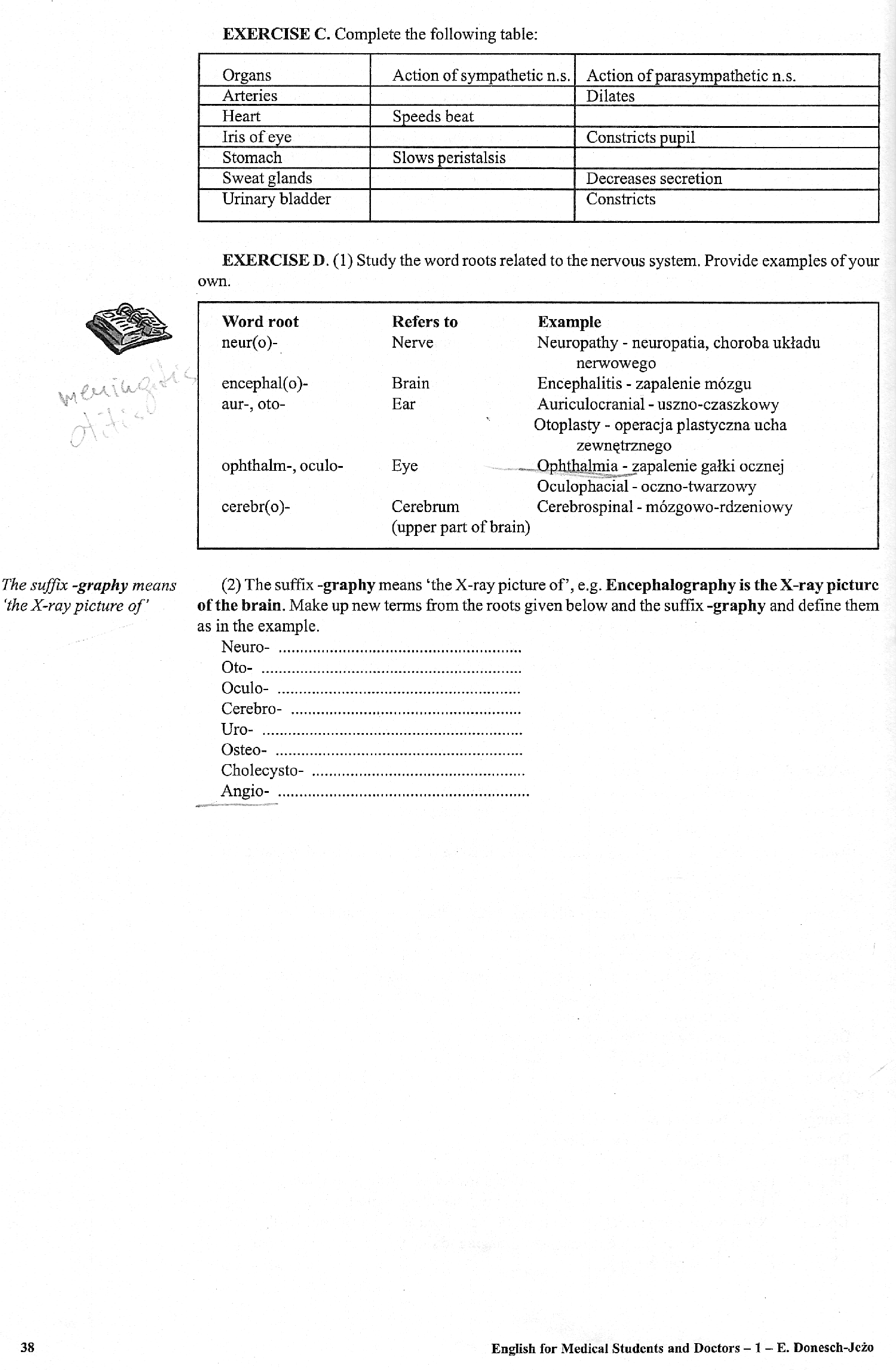38

EXERCISE C. Complete the following table:
|
Organs |
Action of sympathetic n.s. |
Action of parasympathetic n.s. |
|
Arterie s |
Dilates | |
|
Heart |
Speeds beat | |
|
Iris of eye |
Constricts pupil | |
|
Stornach |
Slows peristalsis | |
|
Sweat glands |
Decreases secretion | |
|
Urinary bladder |
Constricts |

w
EXERC1SE D. (1) Study the word roots related to the nervous system. Provide examples of your own.
|
Word root |
Refers to |
Example |
|
neur(o)- |
Nerve |
Neuropathy - neuropatia, choroba układu |
|
nerwowego | ||
|
encephal(o)- |
Brain |
Encephalitis - zapalenie mózgu |
|
aur-, oto- |
Ear |
Auriculocranial - uszno-czaszkowy Otoplasty - operacja plastyczna ucha |
|
zewnętrznego | ||
|
ophthalm-, oculo- |
Eye •—— |
Ophth.ąlmiajj:apaleme gałki ocznej |
|
Oculophacial - oczno-twarzowy | ||
|
cerebr(o)- |
Cerebrum (upper part of brain) |
Cerebrospinal - mózgowo-rdzeniowy |
The suffix -graphy means 'theX-ray picture of
(2) The suffix -graphy means ‘the X-ray picture ofe.g. Encephalography is the X-ray picture of the brain. Make up new terms from the roots given below and the suffix -graphy and define them as in the example.
Neuro- .........................................................
Oto- .............................................................
Oculo- .........................................................
Cerebro- ......................................................
Uro- .............................................................
Osteo- ..........................................................
Cholecysto- ..................................................
Angio- ...........................................................
38
English for Medical Studcnts and Doctors - 1 — E. Donesch-Jcżo
Wyszukiwarka
Podobne podstrony:
2.2.3 Primary and secondary services There are two classes of allocation shown in the following Tabl
142 Agata Borowska-Pietrzak The following table describes the subjective feeling of X’s employees in
Table5 On the following table: Prepare the ooom 509 of the jib assembling the rings 540 and the coll
test Didactics of FL teaching examination - 2008 Name:_ Complete the following: 1.
img019 (26) Developing contactsGrammar Complete the following profile of a company manager, putting
8,9 SECTIONShape A Complete the following tables. SECTION 1 1 B I loscribe the shape of the followin
20(1) EXERCISE A. Answer the following ąuestions. 1; What processes does the respiration consist of?
CSG247 236 Complete Spanish Grammar The following is a selected list of verbs that take a person as
CCF20110521�016 ou Giving advice Complete the following pieces of advice. Choose from the box. I It
więcej podobnych podstron